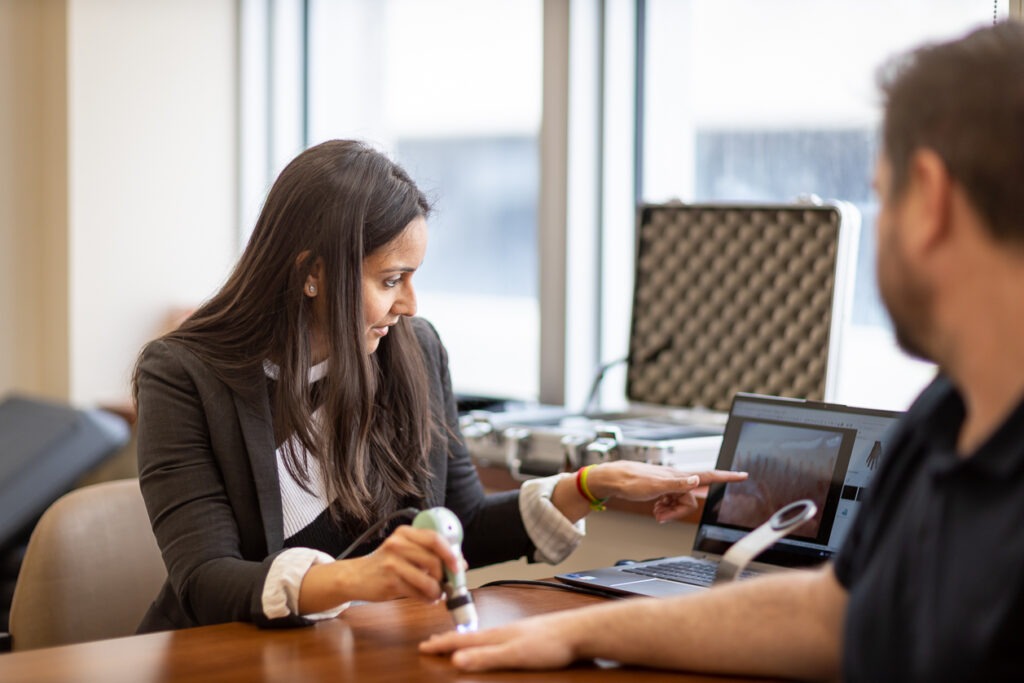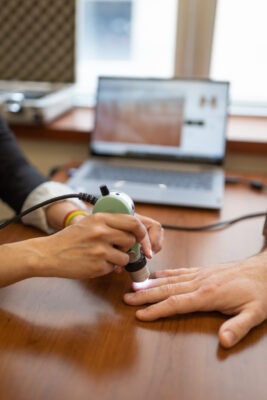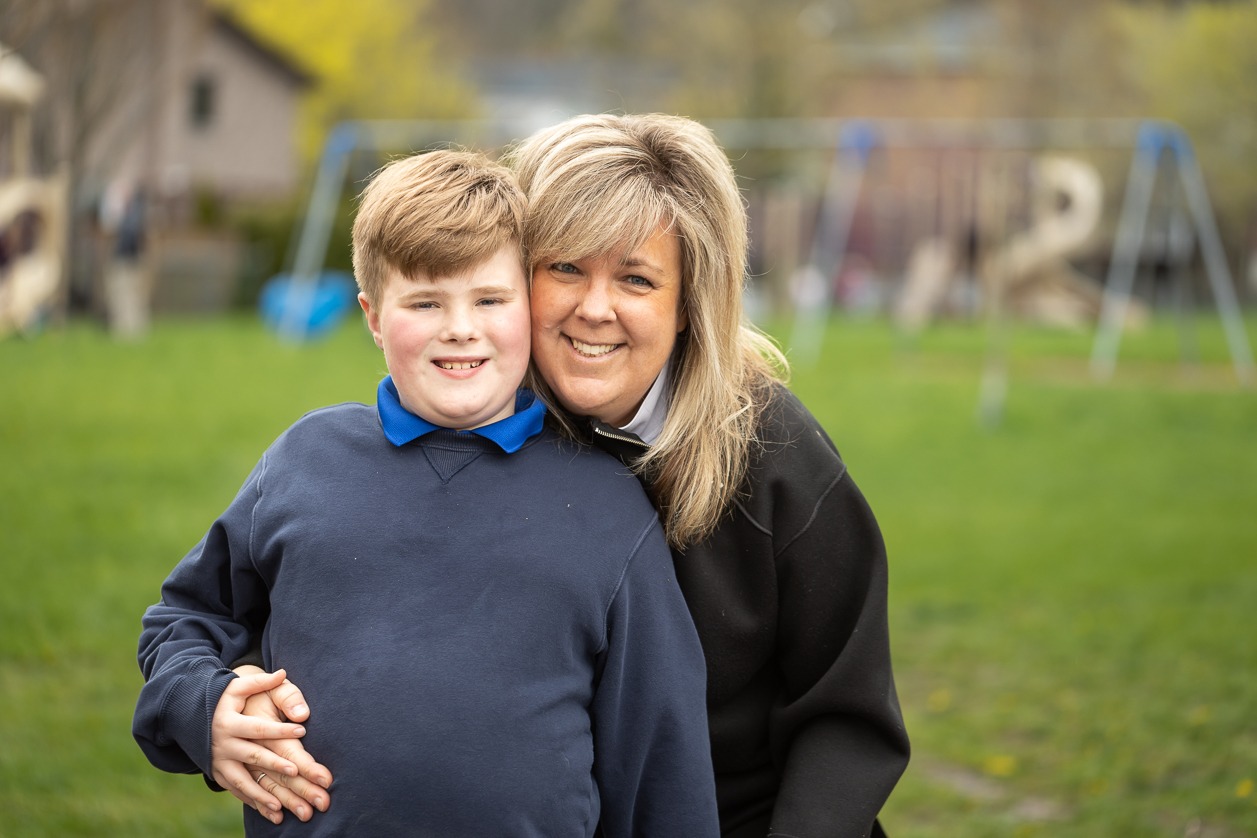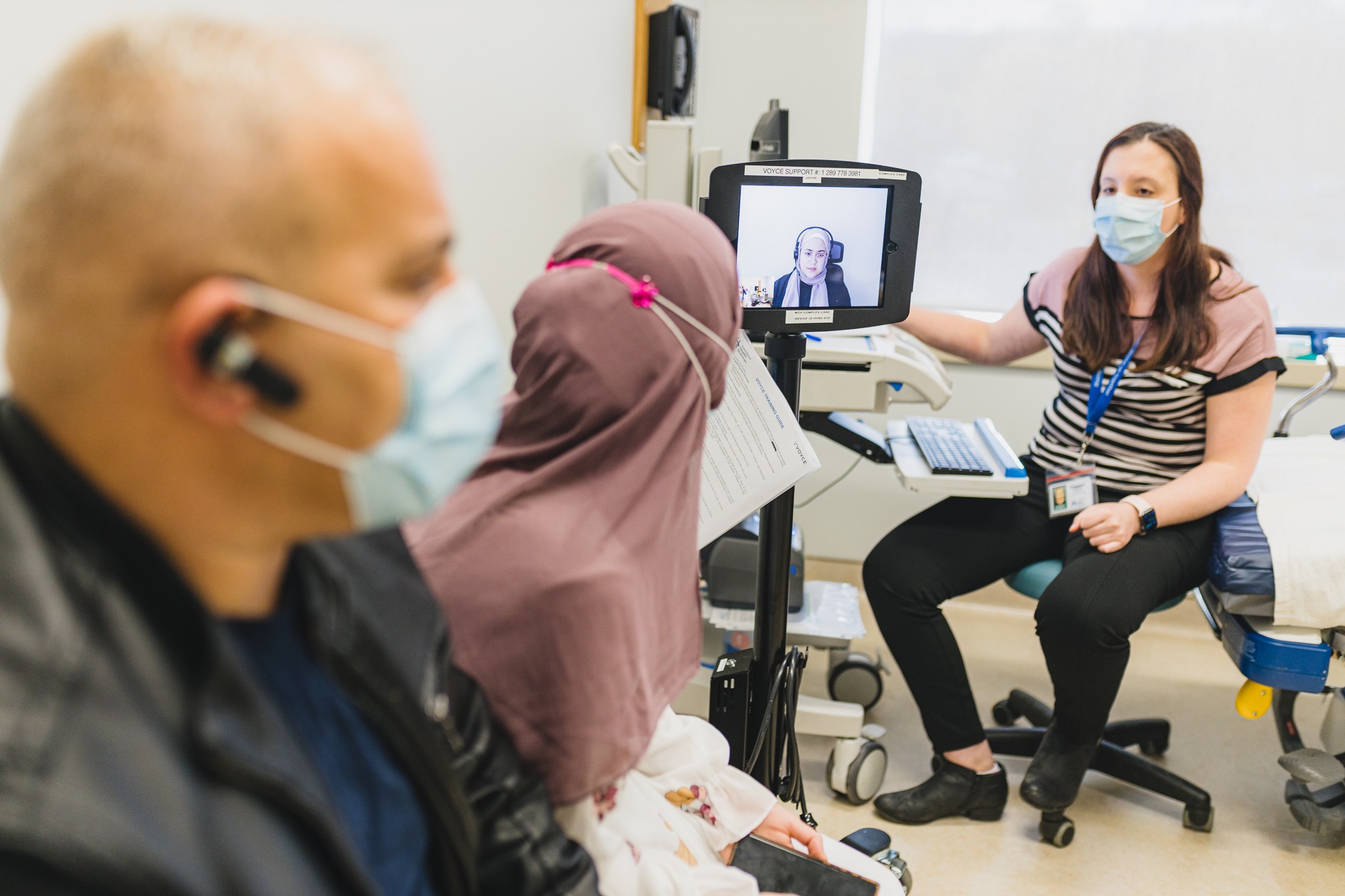
Diabetes study finds a wealth of information at your fingertips
Despite being separate health conditions, diabetes and heart disease are strongly connected. According to the Heart and Stroke Foundation, people with diabetes are more likely to develop heart disease at a younger age, and are three times more likely to die of heart disease.
“This world-first innovation could lead to better management of diabetes and its complications.”
Identifying a patient’s risk of these complications due to diabetes means preventative measures can be developed. While it has already been established that the capillaries in the retina of the eyes can assess the risk of retinal complications from diabetes, Hamilton Health Sciences’ (HHS) Dr. Reema Shah wondered if the capillaries in nailbeds could be a novel method to providing more information about diabetes in a less invasive manner.

With this device, images can be taken of the capillaries from the finger’s nail fold.
During her research fellowship in 2016, Shah set out to find the answer in partnership with her supervisor Dr. Hertzel Gerstein, an HHS endocrinoligist and recognized leader in diabetes research by the Canadian and American Diabetes Associations.
Artificial intelligence is the key
Shah and Gerstein developed a research study using images from the finger’s nail fold. The nail fold attaches the nail to the rest of the skin through the protective cuticle. The image is captured through a simple, non-invasive, portable diagnostic test called a capillaroscopy.
Then, in 2020, they partnered with HHS’ Centre for Data Science and Digital Health (CREATE) to use artificial intelligence to analyze the images.
“We had been seeking partnerships with various external groups to do the machine learning aspects of the projects for quite some time with no success,” says Shah. “Finding the CREATE team’s expertise in-house finally helped us move the project forward.”

Dr. Reema Shah
The study looked at the capillaries of 120 adult patients with and without type 1 or type 2 diabetes and with and without cardiovascular disease. CREATE’s machine learning experts used a deep learning technique called convolutional neural networks to analyze a total of 5,236 nail fold images, approximately 44 images per participant.
It resulted in accurately distinguishing between patients who did and did not have diabetes and could predict which patients are at greater risk for developing cardiovascular complications. These results were published in the Journal of Diabetes in February of 2023.
“This proof-of-concept study demonstrates the potential of machine learning for identifying people with microvascular capillary changes from diabetes based on nail fold images, and for possibly identifying those most likely to have diabetes-related complications,” says Shah.
Global potential
The team is now looking to expand to a larger number of patients and broaden the scope to see if the risk of other complications from diabetes can also be assessed. Eventually, this discovery could be used in low- and middle-income countries to help provide access to screening tools where there is limited access to health-care professionals.

Jeremy Petch
“This world-first innovation could lead to better management of diabetes and its complications,” says Jeremy Petch, director of CREATE. “And, it’s happening right here in Hamilton thanks to our in-house team of data scientists and AI experts that are building relationships with clinicians who ask great questions and need support finding solutions.”



